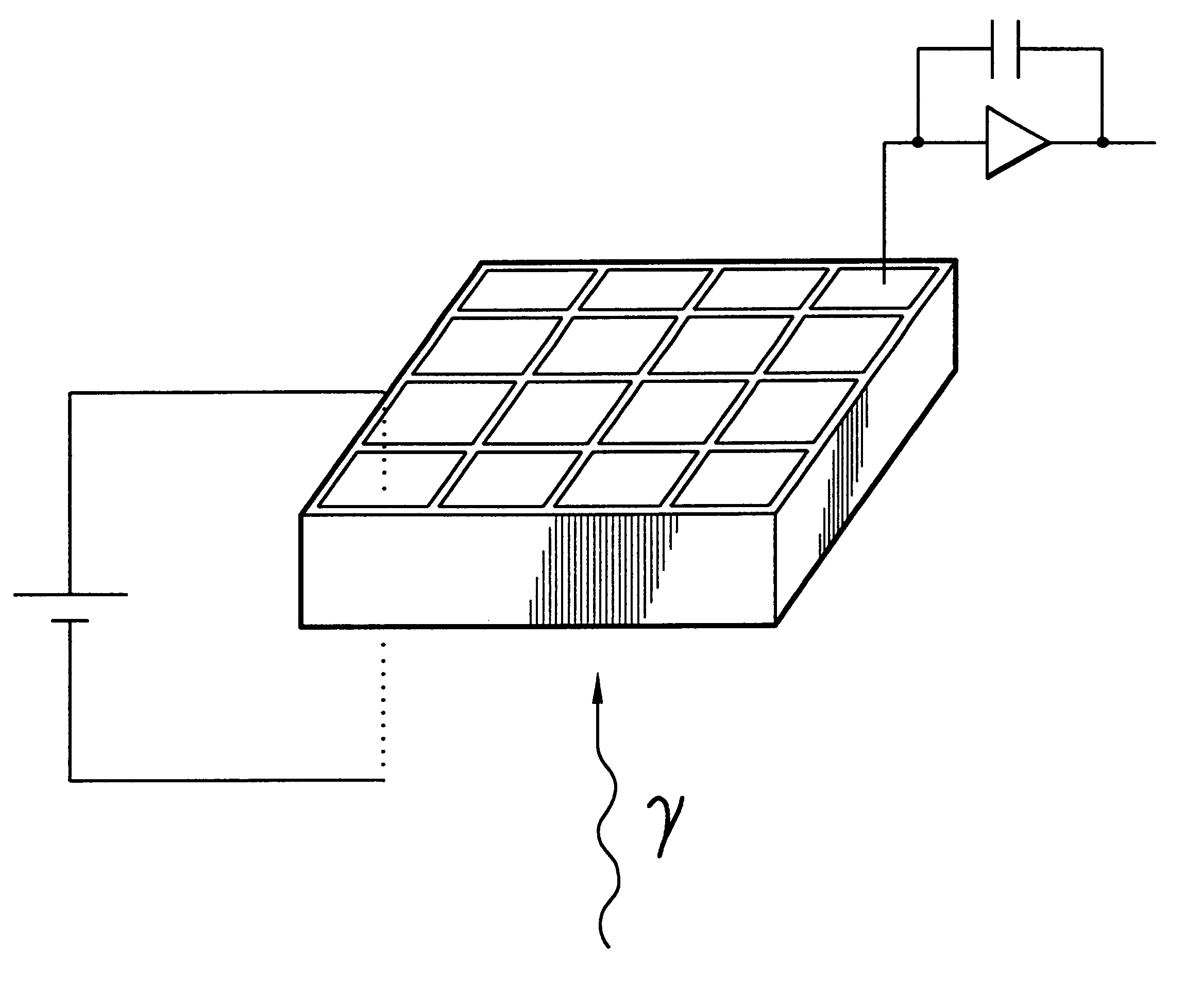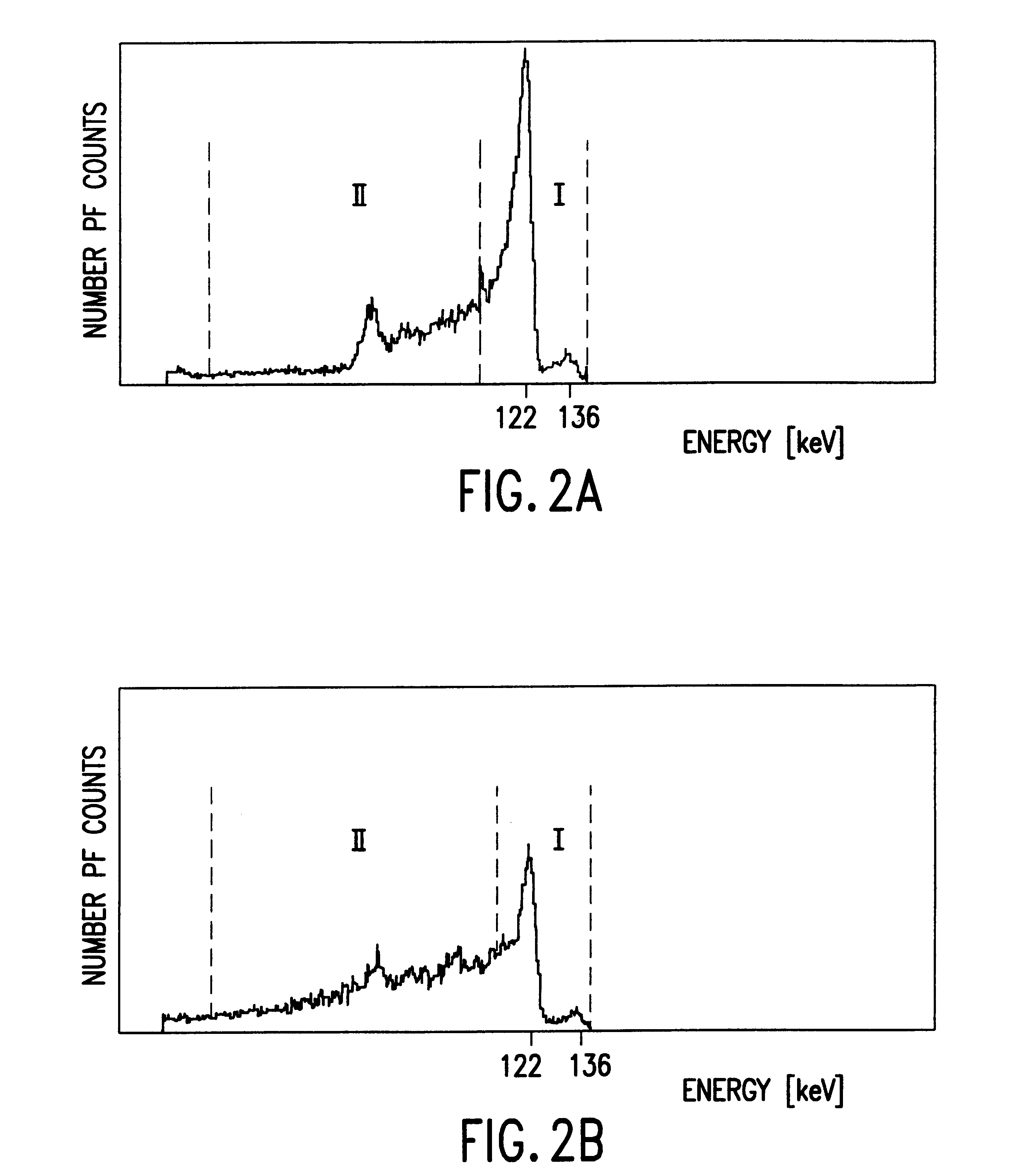Room temperature solid state gamma or X-ray detectors
a detector and solid-state technology, applied in the field of solid-state gamma and x-ray detectors, can solve the problems of low power consumption, low stabilization time, and high cost of imaging systems with germanium detectors
- Summary
- Abstract
- Description
- Claims
- Application Information
AI Technical Summary
Benefits of technology
Problems solved by technology
Method used
Image
Examples
example 2
m (In) doped CdTe material, the electron lifetime decreases with the increase of the In concentration. A desired low value of (.mu..tau.).sub.e can therefore be achieved by the controlled increase of the In doping concentration. (The resistivity of the material will also increase).
It should be mentioned, that the two above examples are not unique and are to be considered non-binding.
Based on the above findings, materials for the detector of interest may have such properties which have never been considered desired for producing spectroscopic detectors.
Typically, the quality of the detector is parameterized by the quantity (.mu..tau.).sub.e. In CdZnTe detectors, the quantity (.mu..tau.).sub.e has been found to vary anywhere from, typically, 4.times.10.sup.-4 cm.sup.2 / V up to 10.sup.-2 cm.sup.2 / V. Hole trapping is at least a factor of 100 more severe than that for electrons, and so may reach values of 10.sup.-5 or lower.
The degree of electron trapping required to compensate for the ...
PUM
 Login to View More
Login to View More Abstract
Description
Claims
Application Information
 Login to View More
Login to View More - R&D
- Intellectual Property
- Life Sciences
- Materials
- Tech Scout
- Unparalleled Data Quality
- Higher Quality Content
- 60% Fewer Hallucinations
Browse by: Latest US Patents, China's latest patents, Technical Efficacy Thesaurus, Application Domain, Technology Topic, Popular Technical Reports.
© 2025 PatSnap. All rights reserved.Legal|Privacy policy|Modern Slavery Act Transparency Statement|Sitemap|About US| Contact US: help@patsnap.com



